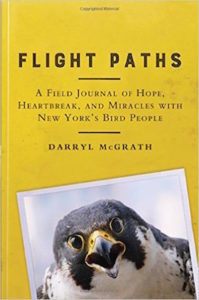 Spend time with ecologically-minded folks for very long and you’ll likely hear quite a lot about the efforts to prevent this or that particular species from going extinct, or even more likely how to bring the population of a species back up to a sustainable level after it had reached a low from which it might not naturally be expected to return. In the late 1970s, much discussion along these very lines centered upon two very charismatic bird species: the Bald Eagle and the Peregrine Falcon. Ravaged by the destructive effects of DDT, habitat loss, and the persistence of long-outdated beliefs about them among some in the countryside that led to them being shot as assumed predators of livestock, the fortunes of both these birds species looked grim indeed.
Spend time with ecologically-minded folks for very long and you’ll likely hear quite a lot about the efforts to prevent this or that particular species from going extinct, or even more likely how to bring the population of a species back up to a sustainable level after it had reached a low from which it might not naturally be expected to return. In the late 1970s, much discussion along these very lines centered upon two very charismatic bird species: the Bald Eagle and the Peregrine Falcon. Ravaged by the destructive effects of DDT, habitat loss, and the persistence of long-outdated beliefs about them among some in the countryside that led to them being shot as assumed predators of livestock, the fortunes of both these birds species looked grim indeed.
In Darryl McGrath’s new book Flight Paths; A Field Journal of Hope, Heartbreak, and Miracles with New York’s Bird People, published under the State University of New York Press‘ Excelsior Editions imprint, the story of how teams of biologists worked to stabilize and eventually restore the populations of these birds is interwoven with the challenges to, and efforts being taken on behalf of, four other threatened bird species – Short-eared Owl, Common Loon, Bicknell’s Thrush, and Piping Plover – to yield what is described as “engaging” and “compelling” by early reviewers.
If you enjoyed reading this, please consider signing up for The Well-read Naturalist's newsletter. You'll receive a helpful list of recently published reviews, short essays, and notes about books in your e-mail inbox once each fortnight.
